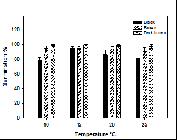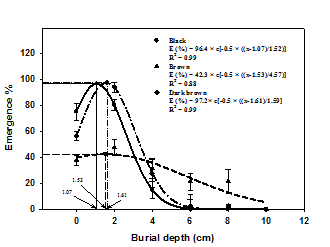ABSTRACT
Catchfly (Silene conoidea), an annual herb, is usually recognized as an emerging weed species in Eurasia and North America. The presence of somatic seed polymorphism might aid in the adaptation of this weed in different climatic conditions. We conducted laboratory and greenhouse experiments to study the seed polymorphism and influence of various environmental factors like temperature, salt stress, osmotic stress and burial depth on the germination and emergence characteristics of catchfly. Optimum germination of seeds of all colors was recorded at a temperature of 15 oC. Germination of catchfly seeds of all colors followed decreasing trend as NaCl concentration increased from 50 mM to 200 mM. Seed germination was maximum (87-96%) at 0 MPa but gradually decreased to 40% as osmotic stress increases up to -0.4 MPa and completely inhibited at 0.6 MPa of all seed colors. A slight increase (from 60 to 95%) in the germination of seeds of black and dark brown colors was observed when seeding depth increased from 0 to 2 cm but decreased when seeding depth increased from 2 to 4 cm in seeds of all colors. There was no emergence of catchfly at seeding depth of 6 cm or greater. Our results concluded that catchfly seeds have the potential to germinate and emerge in various environmental conditions, but germination/emergence percentage of seeds of all colors will be different in different environmental conditions. Soil amendments including deep ploughing may aid for the successful management of this weed in cultivated areas.
Keywords:
polymorphism; catchfly; germination ecology

 Thumbnail
Thumbnail
 Thumbnail
Thumbnail
 Thumbnail
Thumbnail
 Thumbnail
Thumbnail



